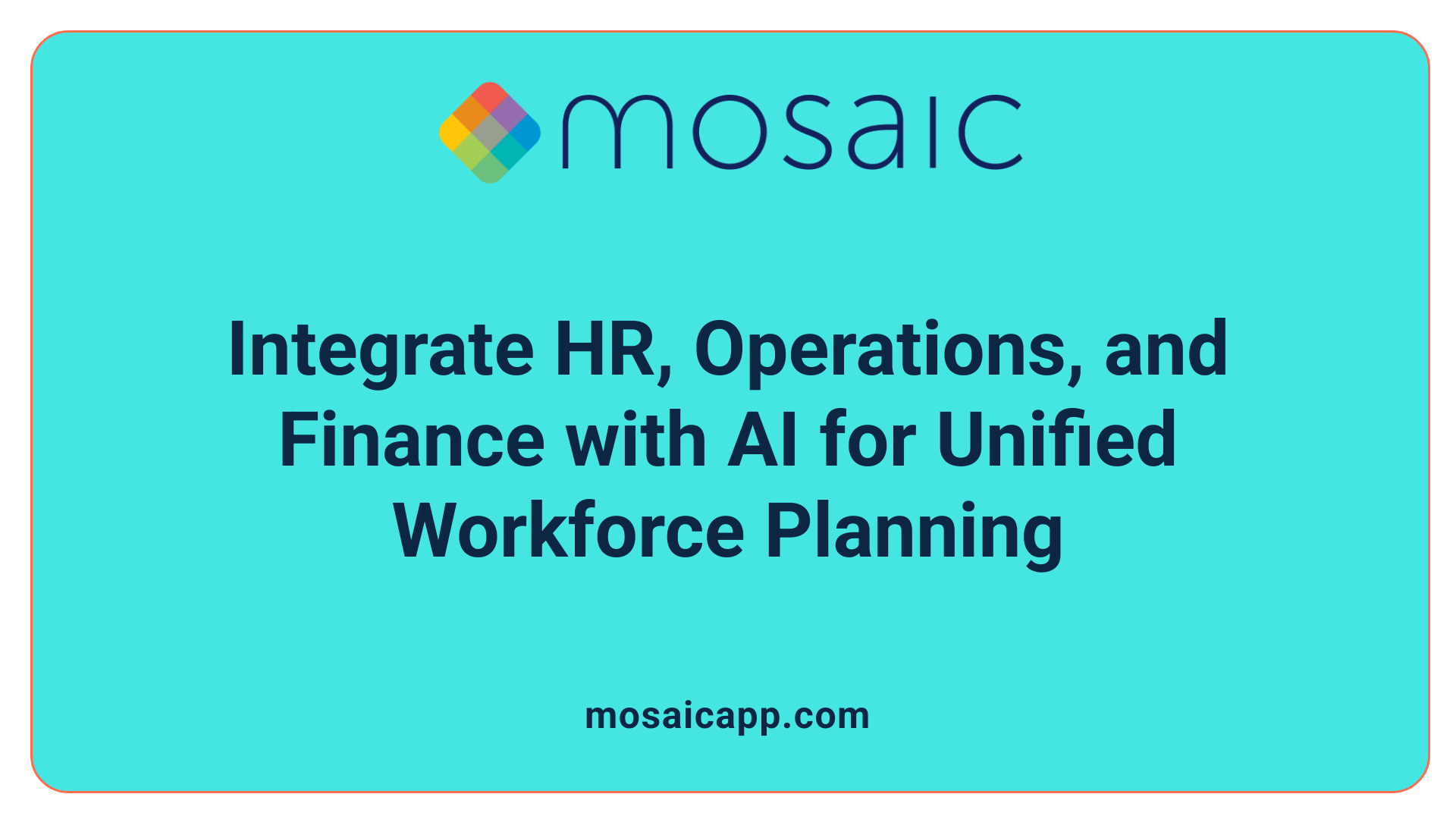Harnessing AI for a Human-Centric Future in Workforce Strategies
The integration of Artificial Intelligence (AI) into workforce planning has revolutionized how organizations predict, develop, and manage talent. Moving beyond traditional methods, AI enables a strategic, data-driven, and human-centered approach to building resilient and agile workforces capable of thriving in a rapidly evolving technological landscape. This article explores the strategic role, benefits, ethical considerations, and future opportunities AI offers in supporting human-centric workforce planning.
The Strategic Role of AI in Workforce Planning

How does AI support in predictive analytics and scenario modeling?
AI has revolutionized workforce planning through advanced predictive analytics and scenario modeling. These tools analyze vast amounts of historical and real-time data to forecast future talent needs, identify potential skill gaps, and simulate various strategic scenarios. For instance, modeling how the adoption of generative AI may impact demand for specific roles helps organizations plan proactively. These simulations enable leadership to evaluate different options, prepare for disruptions, and make informed decisions about talent acquisition, reskilling initiatives, and capacity adjustments.
Table 1: AI-Driven Forecasting and Scenario Planning Features
| Feature | Description | Benefits |
|---|---|---|
| Forecasting Future Skills | Uses data analytics to project evolving skill requirements | Prepares organizations for technological shifts |
| Gap Analysis | Identifies current skills versus future needs | Guides targeted training programs |
| Scenario Simulation | Models impacts of AI adoption or market changes | Supports strategic decision-making |
AI enhances the agility of workforce management, allowing organizations to stay ahead of industry trends and technological disruptions.
How does AI improve flexibility and reskilling strategies?
Flexibility and continuous reskilling are central to effective workforce strategies in the age of AI. AI enables organizations to analyze individual capabilities and recommend personalized learning pathways, promoting agility in skill development. Automated training platforms adapt content based on employee performance and preferences, accelerating upskilling efforts.
Moreover, AI-powered scheduling tools offer flexible work arrangements, allowing employees to bid on shifts that suit their life commitments, boosting job satisfaction.
Reskilling initiatives driven by AI help reduce dependence on external hiring and facilitate internal mobility. For example, recommending targeted courses for skill gaps ensures that employees grow alongside technological advances, fostering a culture of continuous learning.
How does the integration across HR, operations, and financial planning enhance workforce effectiveness?
Integrating workforce planning across HR, operations, and finance creates a unified approach to talent management. AI facilitates this integration by providing a centralized data platform where decisions are informed by real-time insights.
This holistic view allows organizations to allocate resources dynamically, optimize staffing levels based on operational needs, and align financial planning with talent development efforts. For instance, predictive models can forecast staffing requirements while considering budget constraints, ensuring that hiring and training are financially sustainable.
Such integration promotes agility, supports organizational resilience, and ensures that workforce strategies are closely aligned with broader business objectives.
How are organizations leveraging AI to stay competitive amid technological change?
Organizations are leveraging AI to monitor industry indicators, analyze market trends, and identify capability gaps rapidly. By continuously scanning the environment, AI helps anticipate shifts in technology, customer preferences, and workforce supply/demand.
Scenario-based forecasting models assist organizations in evaluating different pathways for technology adoption, enabling them to adapt quickly and efficiently.
Furthermore, AI systems can identify internal talent gaps and suggest targeted upskilling or hiring, maintaining a competitive edge. This strategic agility helps organizations not only keep pace with innovation but also position themselves as industry leaders.
How do organizations balance talent development with technological advancements?
Balancing talent development with technological progress involves strategic investments in employee learning and adaptation. Organizations prioritize reskilling and upskilling, aligning development initiatives with emerging technological needs.
AI plays a crucial role by analyzing skills gaps, recommending personalized training, and monitoring progress, ensuring that employees remain relevant in their roles.
Simultaneously, companies foster a culture that values agility and continuous learning, enabling staff to embrace change confidently. Such balanced strategies promote growth and innovation while ensuring a resilient, future-ready workforce.
Building Resilient and Agile Workforces for the Future
The integration of AI tools into human-centered workforce planning marks a transformative shift towards more strategic, responsive, and ethical organizational practices. By leveraging advanced analytics, automation, and human-centric algorithms, organizations can better anticipate talent needs, foster innovation, and enhance employee engagement. As future trends point toward increased automation, personalized learning, and sophisticated scenario planning, the importance of maintaining ethical AI use and fostering human-AI collaboration remains paramount. Embracing these developments will enable organizations to build resilient and agile workforces that are prepared to meet both today's challenges and tomorrow's opportunities, ensuring sustained growth and competitive advantage.
References
- Strategic workforce planning in the age of gen AI
- Human-centered AI for HR: What it is + why it matters
- Rethinking Strategic Workforce Planning with AI Agents
- Enhancing Workforce Planning with AI in Human Resources
- How AI can augment a people-centered workforce
- Unlocking Potential: AI Tools in Workforce Agencies PART 1
- Harnessing AI in workforce planning


